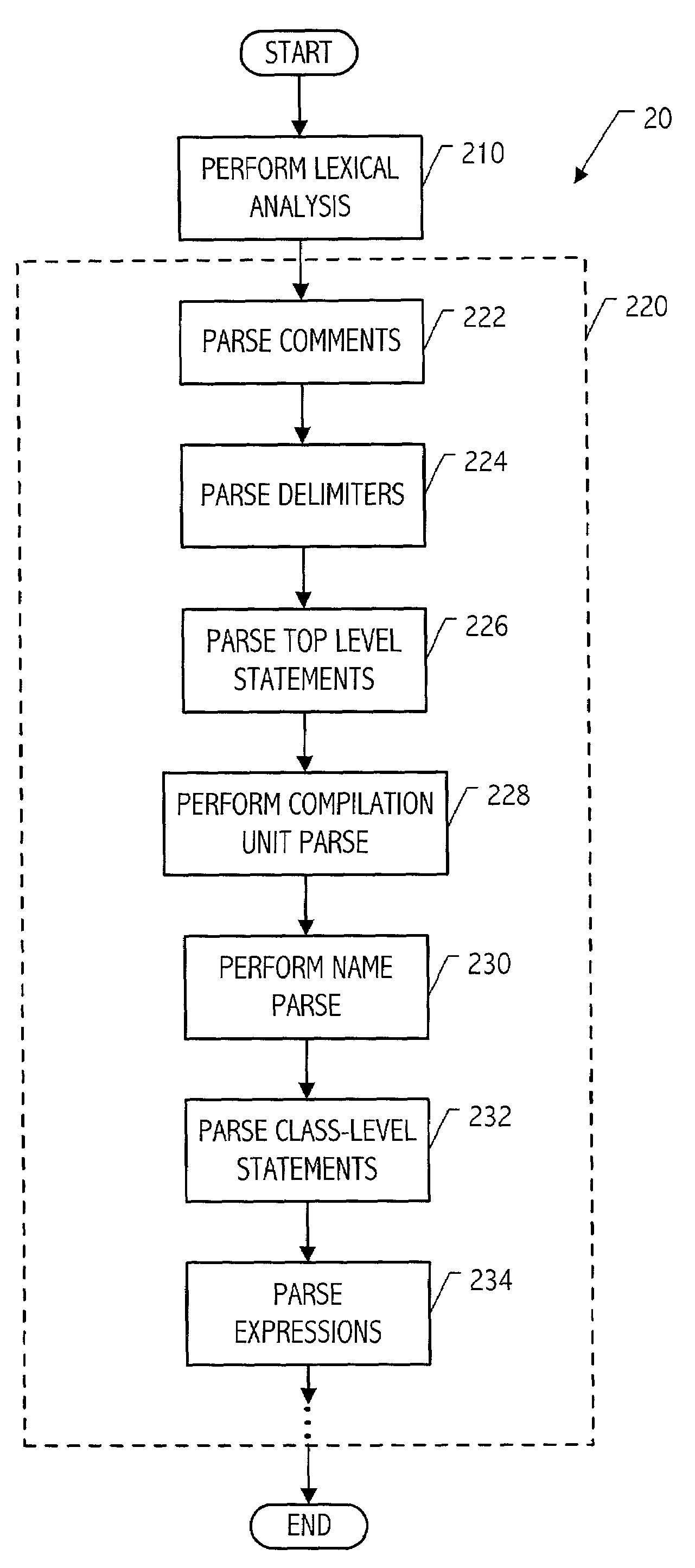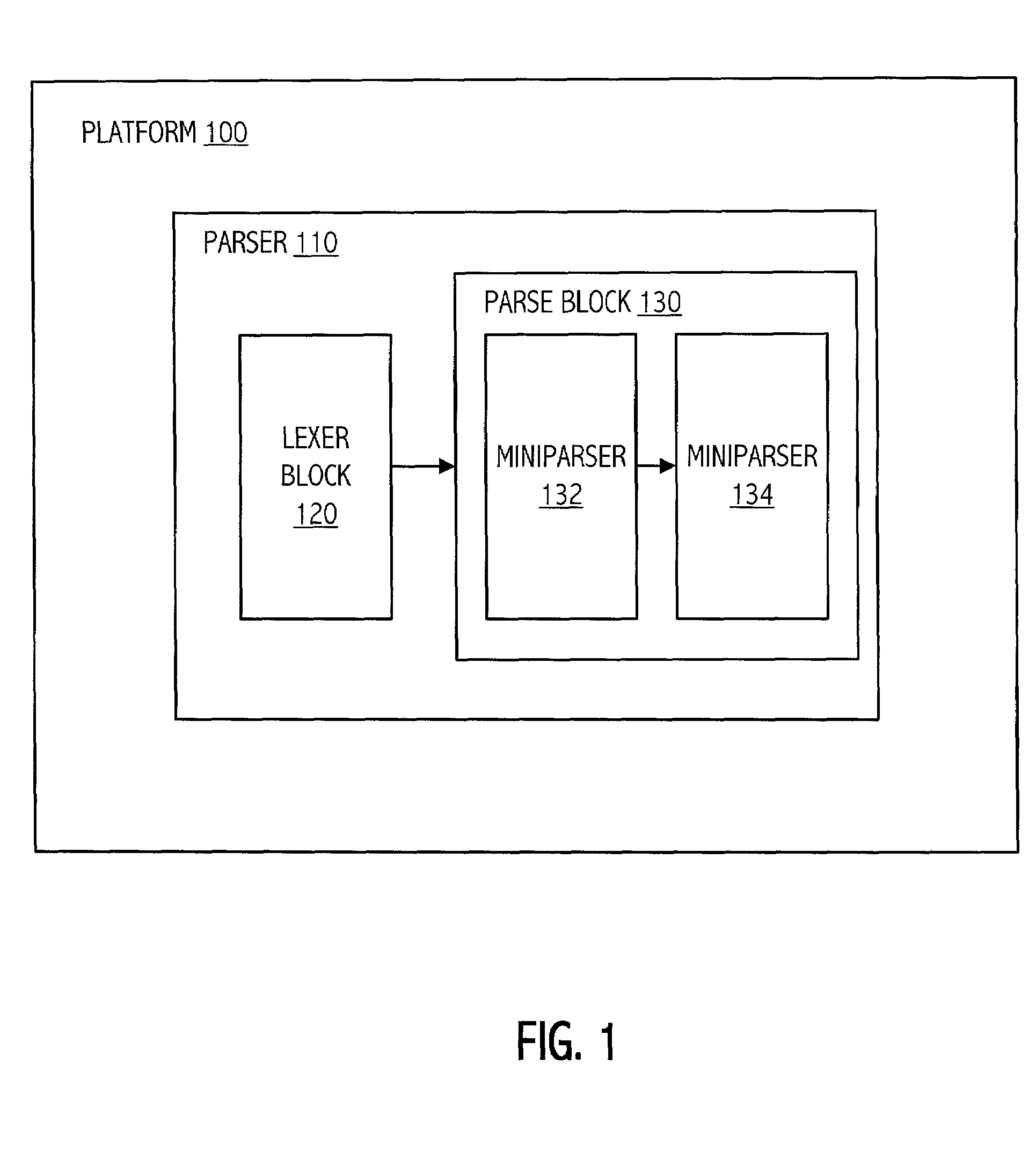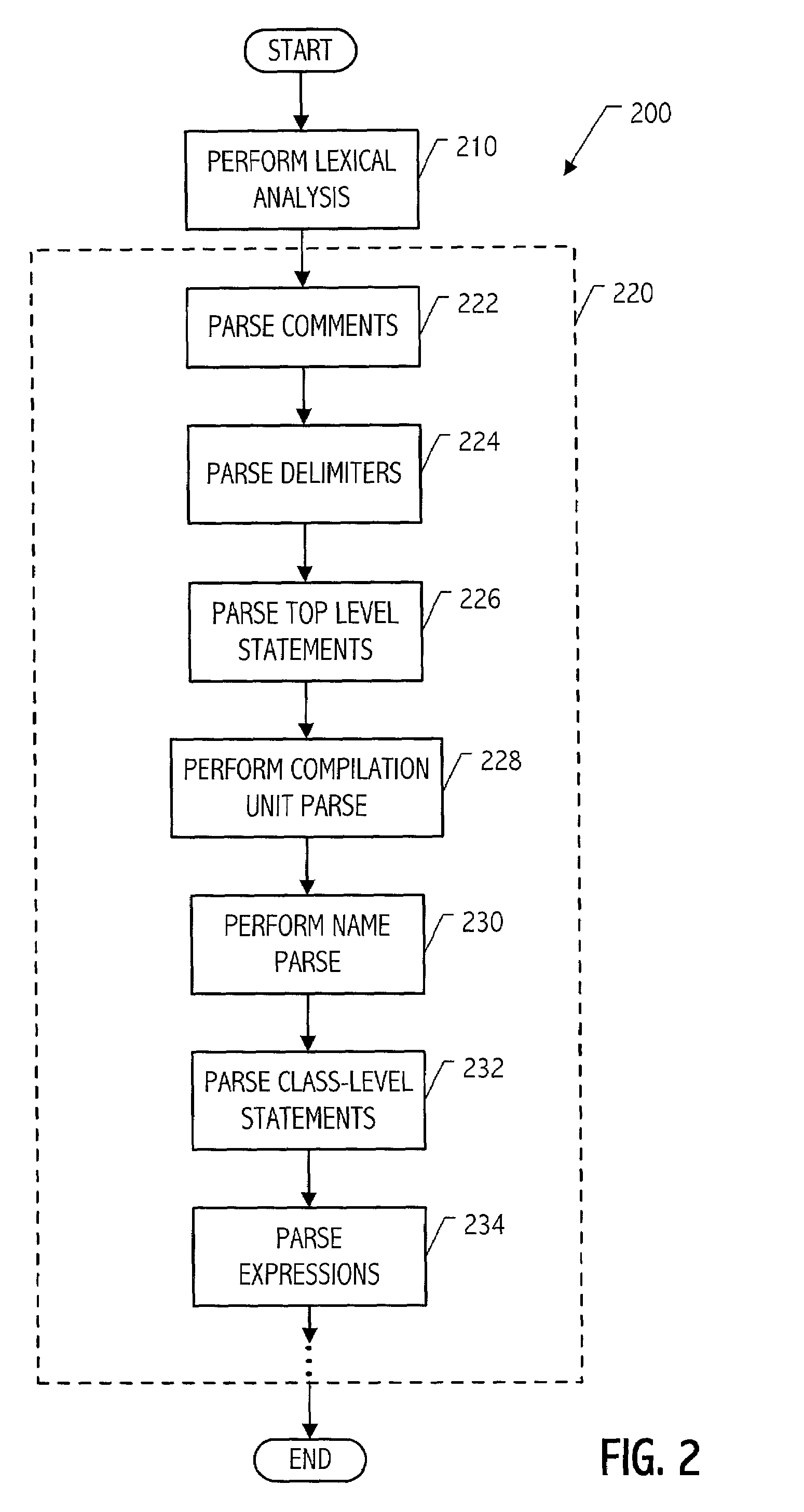Modular parser architecture with mini parsers
a parser and module technology, applied in the field of parsing technology, can solve the problems of difficult modification of table-driven parsers, weak strengths of traditional parser architectures, and the ability of parsers to afford decreased performan
- Summary
- Abstract
- Description
- Claims
- Application Information
AI Technical Summary
Benefits of technology
Problems solved by technology
Method used
Image
Examples
Embodiment Construction
[0024]The following discussion is intended to provide a detailed description of at least one example of the invention to aid those skilled in the art to understand and practice the invention. For example, FIG. 1 and the following figures and discussion describe an exemplary miniparser architecture. This exemplary miniparser architecture provides a useful reference in discussing various aspects of the invention. Of course, the description of the architecture has been simplified for purposes of discussion, and it is just one of may different types of appropriate architectures that may be used in accordance with the invention. Consequently, the following discussion should not be taken to be limiting of the invention itself. Rather, any number of variations may fall within the scope of the invention which is properly defined in the claims following this description.
[0025]FIG. 1 shows an architectural model of a top down, modular parser 110. Platform 100 includes parser 110. Parser 110 i...
PUM
 Login to View More
Login to View More Abstract
Description
Claims
Application Information
 Login to View More
Login to View More - R&D
- Intellectual Property
- Life Sciences
- Materials
- Tech Scout
- Unparalleled Data Quality
- Higher Quality Content
- 60% Fewer Hallucinations
Browse by: Latest US Patents, China's latest patents, Technical Efficacy Thesaurus, Application Domain, Technology Topic, Popular Technical Reports.
© 2025 PatSnap. All rights reserved.Legal|Privacy policy|Modern Slavery Act Transparency Statement|Sitemap|About US| Contact US: help@patsnap.com



